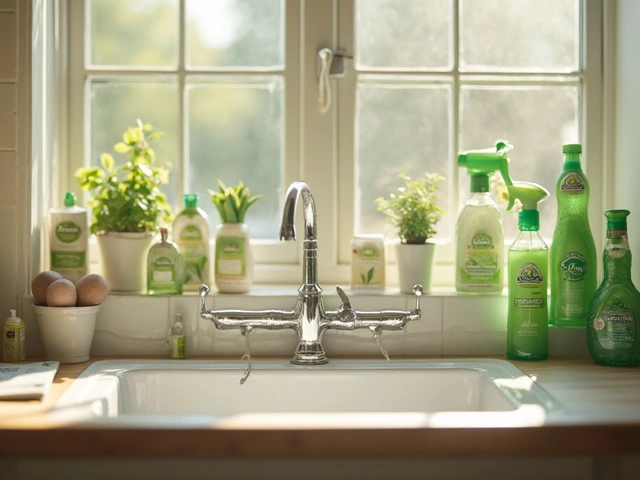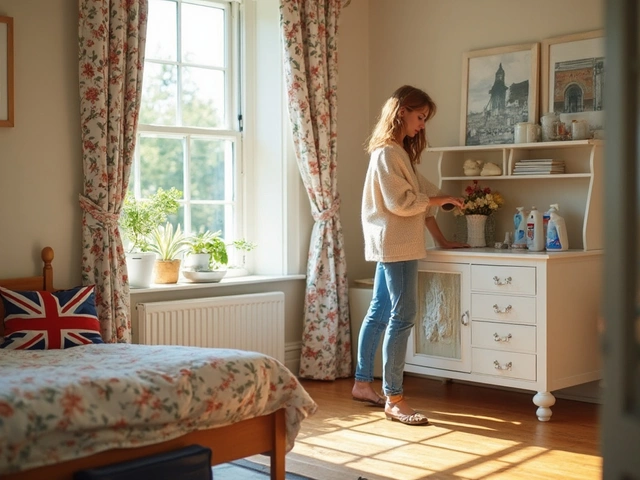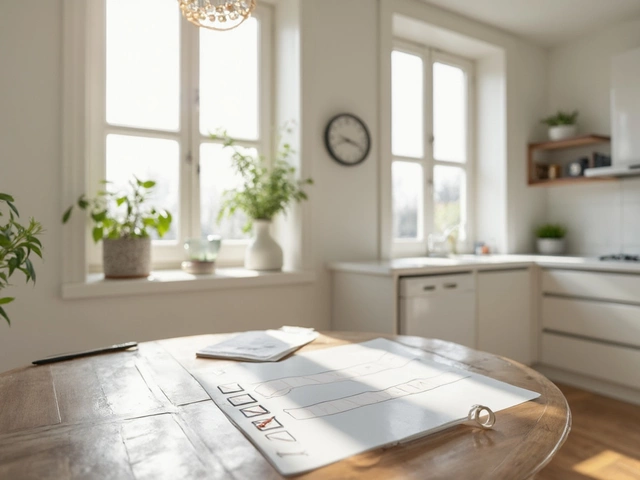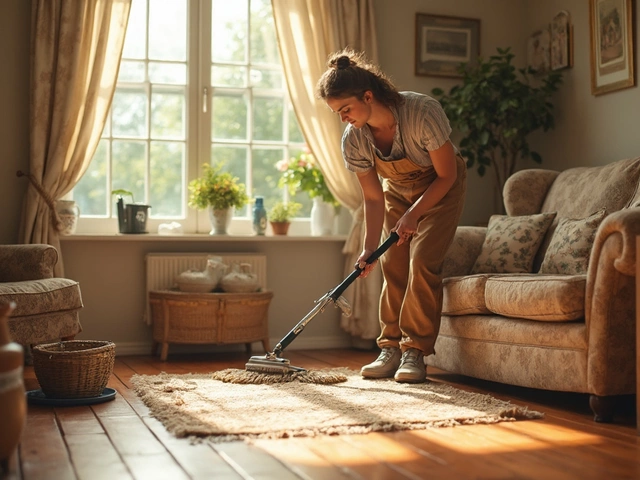Ever thought about cleaning your upholstery without getting it wet? It might sound like magic, but it's actually pretty simple and super practical! Wet cleaning isn't always suitable, especially for fabrics that don't play nice with water, like velvet or vintage materials.
Firstly, why ditch the water? Well, some fabrics can shrink or lose color when they come in contact with water. Not only that, but moisture can also lead to mold, nasty odors, and sometimes even ruin the padding underneath. So, keeping upholstery dry during cleaning is smart.
Okay, so what do you use instead of water? There are handy products like dry cleaning solvents that work wonders on dirt and stains without a drop of moisture. And if you want to go DIY, there are homemade solutions involving baking soda and cornstarch, which are not just effective but budget-friendly!
- Why Avoiding Water is Important
- Tools and Products for Dry Cleaning
- Step-by-Step Cleaning Process
- Homemade Solutions for Dry Cleaning
Why Avoiding Water is Important
Believe it or not, keeping water away from your upholstery can be crucial for its longevity. Sure, water might seem harmless, but it can actually do more harm than good to certain fabrics.
Why? Let’s break it down. Some materials, like velvet or silk, just don't mix well with moisture. They can shrink or even bleed color if they get too wet. Imagine your once-vibrant couch looking dull just because of a splash of water!
“Choosing the right cleaning method for your fabric can prolong its life by years,” says Jane Adams, a well-known fabric care expert.
Risks of Moisture
Moisture doesn’t just mess with the fabric’s appearance—it can also lead to mold and mildew growth. That's not something you want creeping into your home. Plus, dampness can seep down into the padding of your furniture, creating nasty odors that no air freshener can mask.
Color and Texture Change
Another biggie is the risk of color run. You know those ugly bleeds and blotches you see sometimes? That's often because water messed with the dyes. Also, consider the fabric's texture changing, which can make your once-cozy couch feel a bit rough around the edges.
Special Cases
When dealing with antique or vintage pieces, staying dry is almost non-negotiable. These items usually have unique, fragile fabrics that standard cleaning just can't handle. Keeping them dry during cleaning ensures they're preserved for years to come without unwanted surprises.
Also, for homes with kids and pets, avoiding wet cleaning can save loads of headaches. Think of all those spills, crumbs, and, well, other things kids and pets leave behind. Dry cleaning helps keep everything in check, avoiding potential water-related accidents.
| Fabric Type | What's at Stake |
|---|---|
| Velvet | Shrinkage, Texture loss |
| Silk | Color bleeding, Weakening |
| Antique Fabrics | Permanent damage, Value loss |
So, next time you think about cleaning upholstery, remember—you don't always need water. And keeping it dry could be one of the best moves you make for your furniture's health.
Tools and Products for Dry Cleaning
Let's dive into the things you'll need to get your upholstery looking fresh without a drop of water. These tools and products are lifesavers for fabrics that shy away from moisture.
Dry Cleaning Solvents
These are your go-to for most dry cleaning tasks. They work by removing dirt and stains with a special mix of chemicals. Look for ones specifically designed for upholstery, as they are safe and effective. Ensure good ventilation when using these to avoid inhaling fumes.
A recent review from 'Furniture Care Experts' states, "Using dry cleaning solvents can effectively tackle tough stains while preserving the integrity of delicate fabrics."
Vacuum Cleaner with Upholstery Attachment
A vacuum cleaner isn't just for floors! A good quality vacuum with an upholstery or brush attachment can do wonders. It helps remove dirt and grit that wear down fabric fibers over time.
Brushes
A soft-bristled brush is perfect for loosening embedded dirt. Be gentle to avoid damaging the fabric. It's especially handy for crumbs and small debris in seams and crevices.
Homemade Solutions
Basic household items can also work for upholstery cleaning. A mix of baking soda and cornstarch can absorb oils and odors effectively. Sprinkle it over the fabric, let it sit for about 15 minutes, then vacuum. Easy, right?
Protective Gear
Always a good idea! Wearing gloves will protect your skin from any potential irritation from chemicals. And if you're using solvents, a mask can help keep you from breathing in the fumes.
Getting the right tools means half the battle is won. With these essentials, you'll be ready to give your upholstery a breath of fresh air without any unwanted moisture pelts.
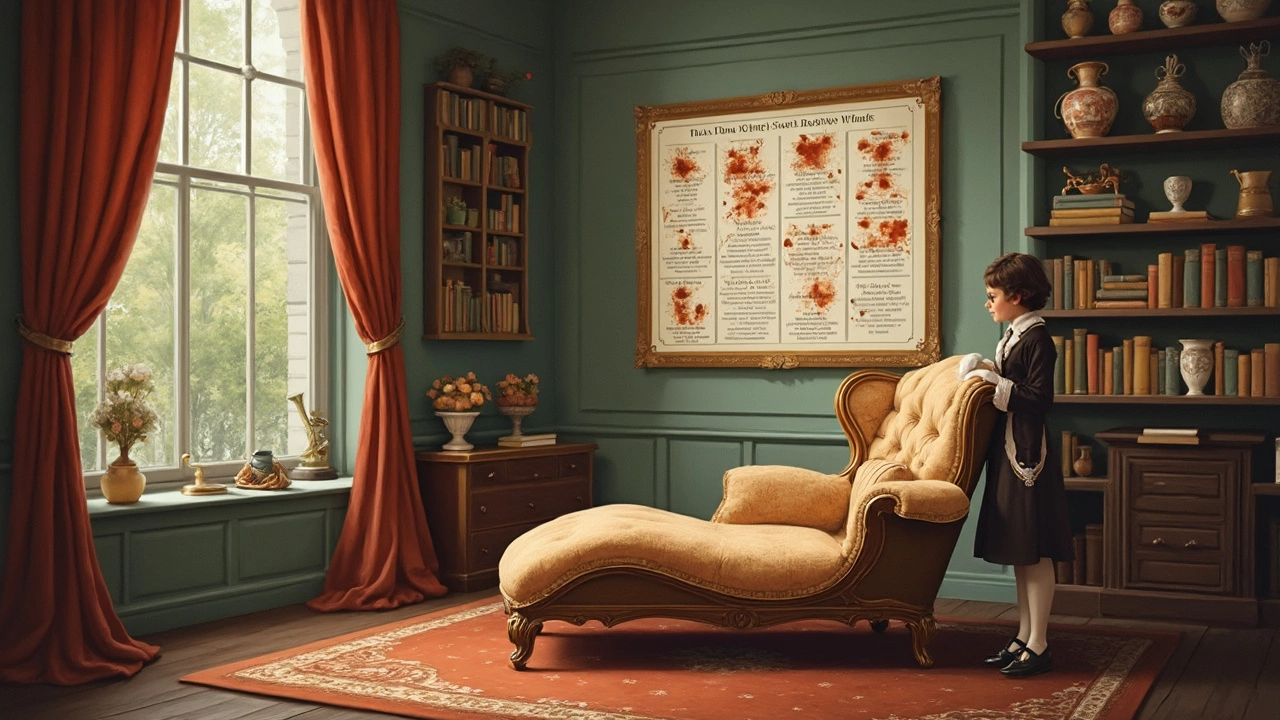
Step-by-Step Cleaning Process
Ready to tackle upholstery cleaning without the worry of water damage? Here's a tried-and-true process to help keep your furniture looking fresh and clean. Let's get right into it!
1. Gather Your Tools
Before you start, make sure you have all the necessary stuff on hand. For dry cleaning, you'll need a dry cleaning sponge or a dry cleaning solvent, a vacuum cleaner, a soft brush, and maybe some baking soda.
2. Vacuum Thoroughly
Begin by vacuuming the upholstery with a brush attachment. This step is crucial because it removes dust, crumbs, and surface dirt. A clean surface makes the rest of the job easier and more effective.
3. Spot Test
If you're using a new cleaning solvent, it's always smart to do a spot test first. Apply a tiny amount to an inconspicuous area to check for any adverse reactions like discoloration.
4. Apply Dry Cleaning Solvent
Carefully apply the dry cleaning solvent according to the product's instructions. Usually, you'll moisten a cloth with the solvent and gently dab the stained areas. Avoid soaking the fabric—just a light touch is enough.
5. Use a Dry Cleaning Sponge
If you have one, a dry cleaning sponge, also known as a 'chemical sponge', can lift dirt and grime without water. Gently rub it over the upholstery in small sections.
6. Stubborn Stains? Try Baking Soda
For tougher spots, sprinkle a bit of baking soda over the area. Let it sit for about 15 minutes before vacuuming it up. This not only helps lift stains but also freshens up any lingering odors.
7. Final Vacuum
Finish up with another round of vacuuming. This will pick up any leftover dirt, baking soda, or debris.
Pro Tip
For an extra layer of protection, consider applying a fabric protector. It can help repel future spills and stains, making your next upholstery cleaning session a breeze!
Homemade Solutions for Dry Cleaning
Got some upholstery cleaning to do without any water in sight? Let's dive into some clever homemade solutions that can help you tackle this challenge. Good news is, you probably already have these ingredients lying around at home!
Using Baking Soda as a Dry Cleaning Agent
Baking soda is not just for baking or keeping the fridge smelling fresh. It's a fantastic tool for non-wet cleaning. It can absorb oils, odors, and even loosen up dirt!
- First, sprinkle a generous amount of baking soda on your upholstery. Make sure you cover the areas evenly.
- Let it sit for about 15 to 20 minutes. This resting period allows the baking soda to do its magic.
- Vacuum up the baking soda using a vacuum cleaner with a brush attachment. Voilà! Fresh-smelling furniture.
Cornstarch for Stain Lifting
Cornstarch is another handy household item that works like a charm on greasy stains.
- Mix cornstarch with just a bit of baking soda to enhance its cleaning power.
- Apply this mixture directly onto the stain and let it sit for at least half an hour.
- Gently brush off the powder and vacuum the residue. Repeat if necessary for tougher stains.
DIY Fabric Freshener
If you want to add a pleasant smell to your upholstery while keeping things dry, try this easy DIY fabric freshener.
- Mix 2 tablespoons of baking soda with a couple of drops of essential oil of your choice.
- Sprinkle this powder lightly over your furniture.
- Let it sit for a while before vacuuming it up, leaving a fresh scent behind.
| Ingredient | Use | Waiting Time |
|---|---|---|
| Baking Soda | Odor removal, dirt loosening | 15-20 mins |
| Cornstarch | Grease stain removal | 30 mins |
Using these dry cleaning methods can save you time, money, and the stress of dealing with water damage. Plus, these solutions are straightforward and free from harsh chemicals. Your furniture will be grateful, and so will your wallet!
